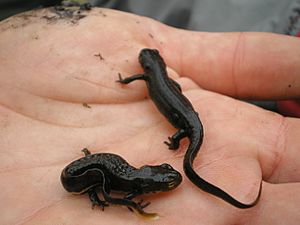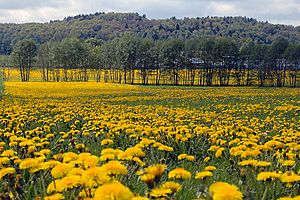Synonym (taxonomy) facts for kids


Synonyms in taxonomy are like regular synonyms, but for living things. They happen when there are two or more scientific names for the exact same plant or animal. Imagine if your best friend had two different official names; that's kind of how it works in taxonomy.
For example, your pet cat has a few scientific names. These include Felis silvestris catus, Felis catus, and Felis catus domestica. All these names refer to the same animal.
Contents
What is Taxonomy?
Taxonomy is the science of naming, describing, and classifying living things. Scientists use a special system to organize all life on Earth. This system helps everyone around the world understand which plant or animal they are talking about. It's like giving every living thing a unique ID.
Why Do Synonyms Happen?
Synonyms in taxonomy can happen for several reasons. Sometimes, different scientists might describe the same species without knowing it. This can happen if they are working in different parts of the world. Other times, new information about a species might change its classification. This can lead to an older name becoming a synonym.
Mistakes and New Discoveries
Imagine two explorers finding the same new animal. They might each give it a different scientific name. Later, scientists realize it's the same animal. One name is then chosen as the official one, and the other becomes a synonym. Also, as we learn more about DNA, we sometimes find that two species once thought to be different are actually the same.
Synonyms in Botany (Plants)
In the world of botany (the study of plants), the word "synonym" has a special rule. For plants, there is always one "correct name." All other names for that same plant are then called synonyms. It's like having one official name and several nicknames.
For example, the palm tree species Daemonorops draco is the correct name. Another name, Calamus draco, is a synonym for the exact same species. This system helps keep plant names clear and organized.
Synonyms in Zoology (Animals)
In zoology (the study of animals), the rules are a bit different. Here, there is one "valid name" for an animal. Any other names for that same animal are called "junior synonyms." This means the valid name is usually the first one given.
The First Name Rule
The "junior synonym" rule means that the name given first is usually the one that sticks. If a scientist describes a new animal and gives it a name, and then another scientist describes the same animal later and gives it a different name, the first name is the "valid name." The second name becomes the "junior synonym." This helps avoid confusion and keeps animal names consistent.
Why Are Scientific Names Important?
Scientific names are very important because they are universal. A common name for an animal or plant can be different in every language. For example, a "cat" is a "gato" in Spanish and a "chat" in French. But its scientific name, Felis catus, is the same everywhere. This helps scientists and people from all over the world understand each other when talking about specific species.
Avoiding Confusion
Using scientific names and understanding synonyms helps avoid confusion. If there were many different names for the same creature, it would be hard to study them. It would also be difficult to protect endangered species if we weren't sure which ones we were talking about. Taxonomy and its rules, including synonyms, help keep the biological world organized.
See also
 In Spanish: Sinonimia (biología) para niños
In Spanish: Sinonimia (biología) para niños

